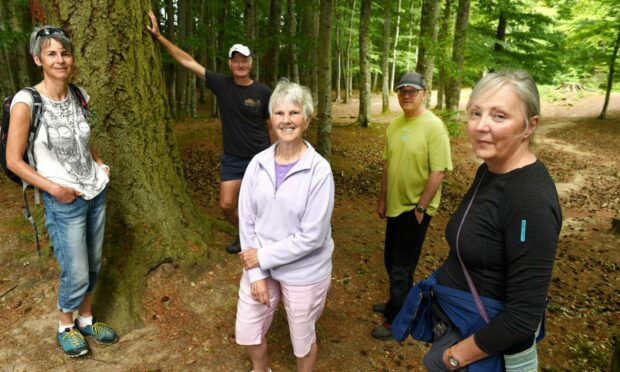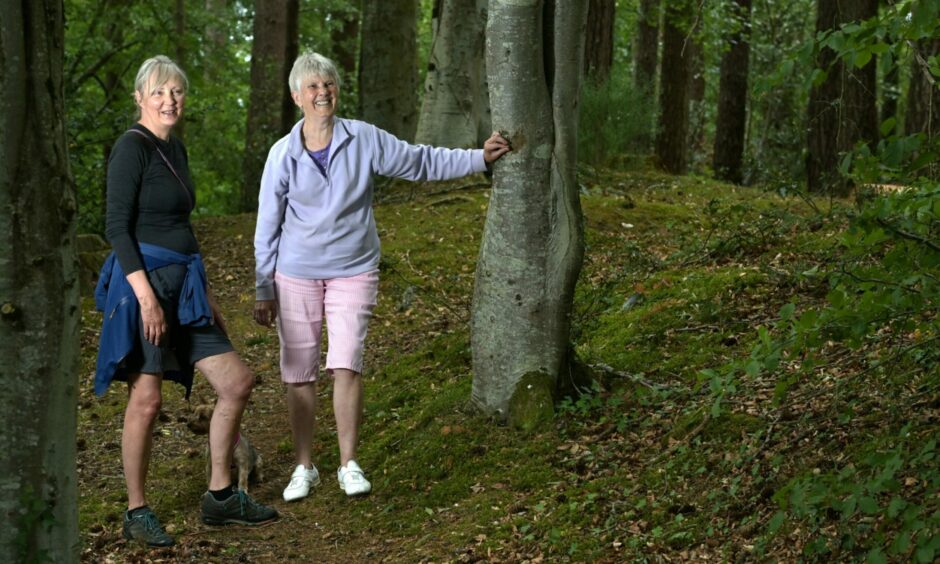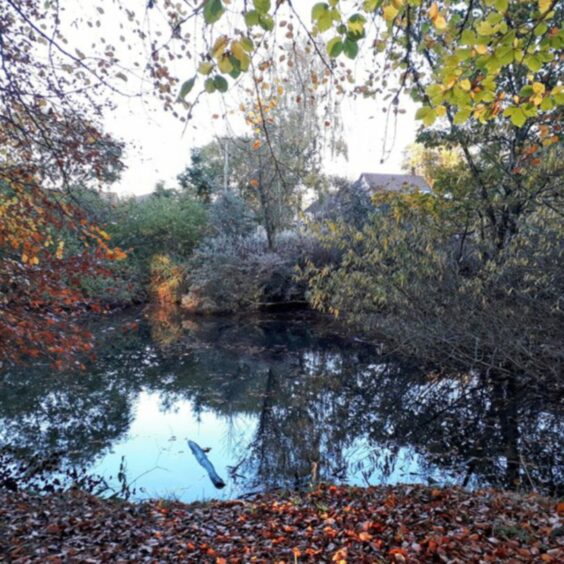At the moment its harder to see the native wood for the non-native trees – but a community group has a clear vision for a newly-acquired area of Inverness.
The Culduthel Woods Group (CWG) has set out actions for the 16-acre site in the city following a complex legal process to confirm ownership.
This includes removing non-native species to help native trees grow.
Woodland gathering planned
The charity also aims to improve paths and carry out surveys of plants and wildlife to help its management strategy.
This Sunday CWG will host its first woodland gathering as part of the Highland Climate Festival, to mark its ownership success.
The woods, close to Inverness Royal Academy and the site of the old Culduthel Hospital, were owned by a housing company until 2002.
When it dissolved voluntarily in 2002 the title of the woods resorted to the Crown and a little-known body, the Queen’s and Lord Treasurer’s Remembrancer (QLTR).
In 2014 QLTR disclaimed the land and the woods were left effectively ownerless.
CWG was formed in 2018 and the following year moved to take over ownership.
With help from groups including Highland Council and Highlands and Islands Enterprise (HIE), the move was confirmed this month.
The woods comprise a variety of species including oak, birch, Douglas fir and Scots pine.
The new owners propose to encourage native trees and gradually remove non-native species such as beech and sycamore.
It also aims to encourage more wildlife, including red squirrels, bats and hedgehogs.
Roe deer and pine marten have also been seen in the area and there is a rookery as well as ducks and other birds on the pond.
A big responsibility
CWG plans to work with the local school to count visitors and work out how people use the woods.
Chairman Murray Ferguson said: “We are really delighted to get to the stage of owning the land and forming a new community wood.
“It is a big responsibility to look after this green space that is so well-used and loved by so many people.
“Over time, we will work to make the woods more natural and even better for wildlife. We’ll remove exotic and invasive species and opening up the canopy to allow more light for native trees.”
He adds: “We want to remove rhododendron ponticum and snowberry bushes as they take over the ground and stop young trees and other native woodland plants from regenerating.
“We also want to restructure the woods and make sure we have a good age range of trees.
“It has been a real team effort. We want to involve as many folk as possible from this stage on.”
Paul Harrington is development manager in HIE’s community assets team. He said ownership allows CWG to develop the woods, while protecting and improving their biodiversity and sustainability.
“Getting to the stage of owning the woodland allows them to make the most of the outdoor space available and offer a range of social and volunteering opportunities to the community while promoting education and encouraging community involvement.
“We wish them all the best with their exciting plans.”
Others can learn from ownership challenges
Linsay Chalmers, development manager at Community Land Scotland, also congratulated CWG.
“The land was ownerless when they started out on their journey. They had a complex and challenging path to follow.
“They have been very generous in sharing their story and putting the challenges associated with ownerless land on the map.
“The learning from their experiences should hopefully make it easier for other communities to acquire ownerless land in the future.
“We hope they enjoy their much-deserved community celebration.”
Last year an archaeological dig in the Culduthel area revealed evidence of an Iron Age craft village.
Are you interested in more exclusive and breaking Highland and Islands news from the P&J? If so, why not join our dedicated Facebook page HERE



Conversation